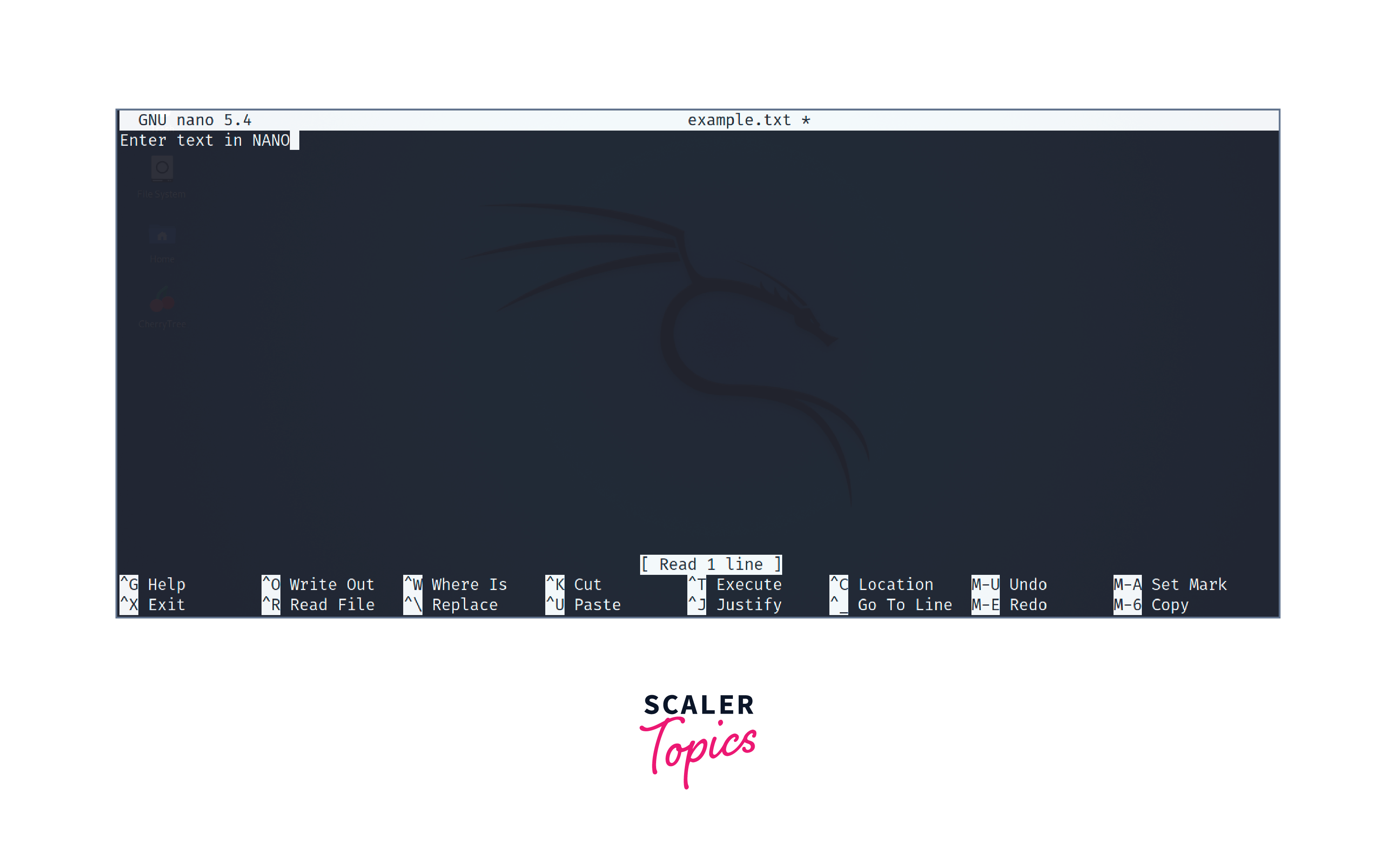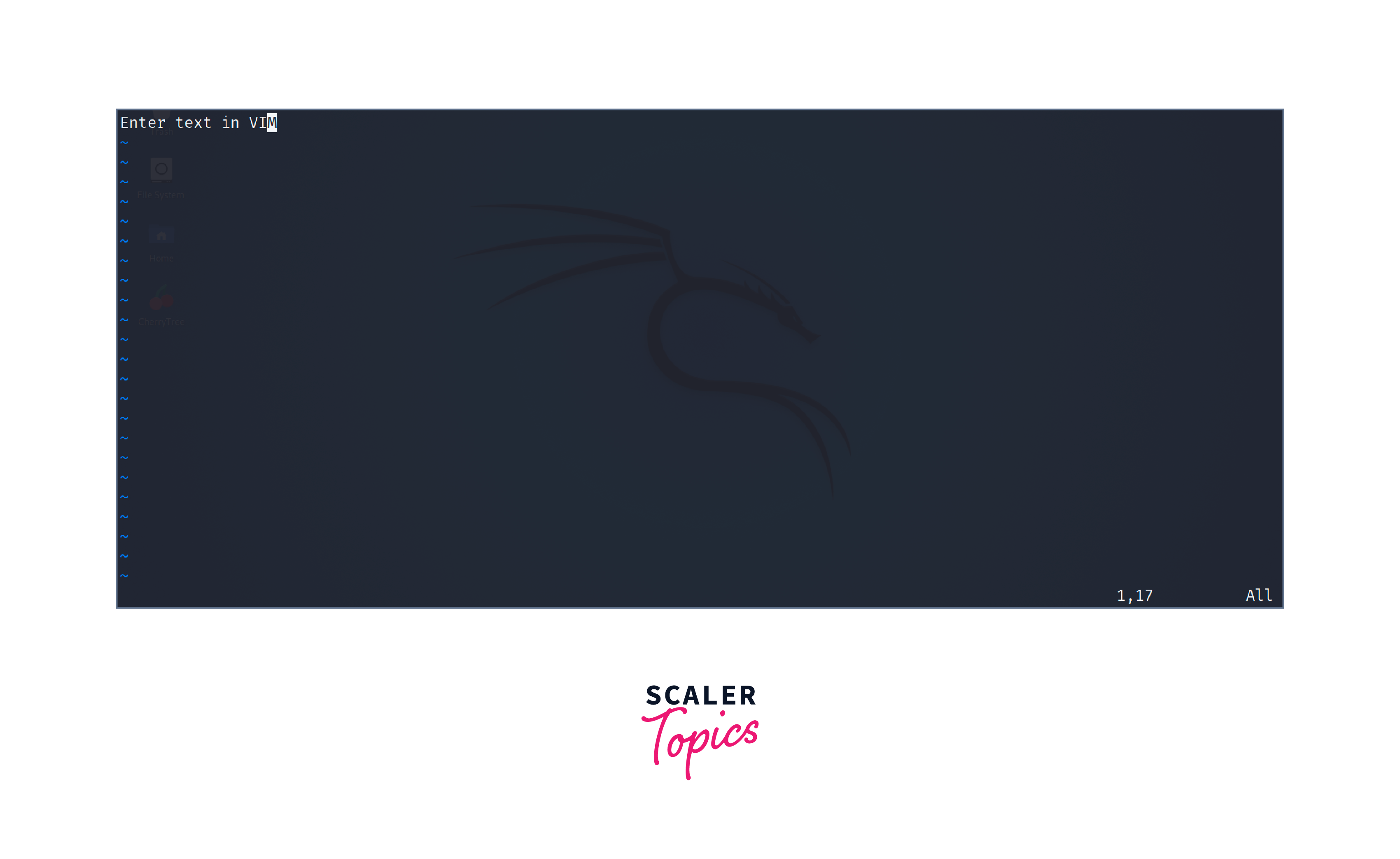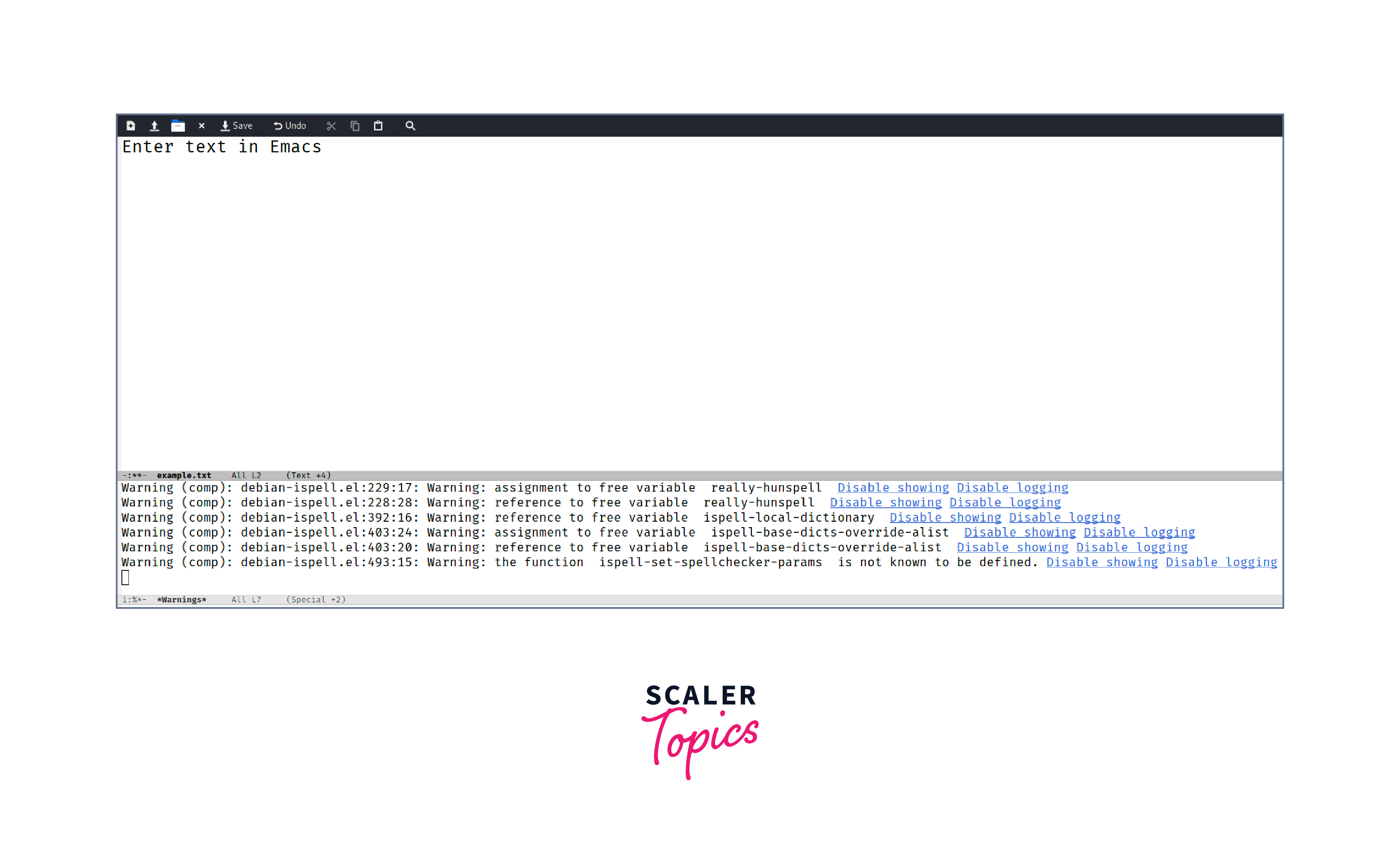How to Edit a File in Linux?
Overview
Linux offers a wide range of powerful tools and utilities for various tasks. One common task that Linux users frequently encounter is editing files. Whether you need to modify configuration files, update scripts, or make changes to plain text documents, Linux provides several methods and editors to accomplish this efficiently. In this article, we will explore the different methods to edit files in Linux like the Nano, VI, and Emacs editors.
Methods to Edit a File in Linux
There are multiple ways to edit files in Linux, each with its own set of advantages and features. Let's explore three commonly used editors: Nano, VI, and Emacs.
Using Nano Editor
Nano is a beginner-friendly and user-friendly text editor available in most Linux distributions. It offers a simple interface with easy controls, making it an excellent choice for those new to command-line editing. To edit a file using Nano, open a terminal and type the following command,

This command will open the specified file in the Nano editor. Let us example of some basic properties of the nano editor,
- Navigation can be done through the keyboard with the arrow keys. You can also use the Page Up(PgUp) and Page Down(PgDn) keys to scroll through the document quickly.
- To start editing the content of the file, move the cursor to the desired location. Simply start typing, and the text will be inserted at the cursor position.
- To copy a block of text, move the cursor to the starting position of the block and press Ctrl + ^. Then, navigate to the end of the block using the arrow keys. Press Alt + 6 to copy the selected text. To paste the copied text, move the cursor to the desired location and press Ctrl + U.
- Nano allows you to search for specific words or phrases within a file. To search for a term, press Ctrl + W and enter the search term. Nano will highlight the first occurrence of the term. To find the next occurrence, press Ctrl + W again.
- To replace a term through the file, press Ctrl + , and enter the search term, followed by the replacement term. Then press Enter to perform the replacement.
- To save the changes made to the file, press Ctrl + O. Nano will prompt you to confirm the file name. Press Enter to save the changes and overwrite the existing file. If you wish to save the changes with a different file name, type the new name before pressing Enter.
- To exit Nano after saving changes, press Ctrl + X. If there are unsaved changes, Nano will prompt you to save them before exiting. Press Y to confirm and save the changes, or N to exit without saving.
- Nano provides an interactive help system that can guide you through its features. Press the Ctrl + G shortcut to access the help menu.
Using VI Editor
VI is a powerful and widely used text editor in the Linux community. While it is much harder to learn compared to Nano, mastering VI can greatly enhance your editing capabilities. To edit a file with VI, open a terminal and type the following command,

This will open the file in VI's command mode in which you can use the h key to move left, j to move down, k to move up, and l to move right.
- To switch to insert mode and start editing, press the i key. In this mode, you can use the arrow keys to navigate through the file.
- To save changes and exit, follow these steps,
- Press the Esc key to return to command mode.
- Type :wq (write and quit), and hit Enter.
- To save the changes made to the file, press the Esc key followed by the :w and press Enter. This command saves the changes without exiting VI. To just exit without saving use the :q option.
- To copy text, position the cursor at the starting location of the text and press yy to copy the current line or yw to copy a word.
- To paste the copied text, move the cursor to the desired location and press p to paste the text after the cursor or P to paste the text before the cursor.
- VI provides powerful search feature. Follow these steps,
- Go to command mode by pressing Esc.
- Press the / key followed by the search term, and VI will find the first occurrence of the term.
- Press the n to find the next occurrence.
- To replace a term, use the following command, go to command mode, and type in the following syntax with your values for the search_term and replace_term,
Using Emacs Editor
Emacs is a highly extensible and customizable text editor known for its extensive features and powerful scripting capabilities. Before exploring emacs, we can check if Emacs is installed on your Linux system by this command,
If Emacs is not found on your Linux system, you can proceed with any of the steps based on your Linux distros for installation,
- For Debian/Ubuntu-based systems, we can install Emacs using the apt package manager through the following command,
- For Red Hat/CentOS-based systems, we can install Emacs using the yum package manager through the following command,
To edit a file with Emacs, open a terminal and type the following command:

This will launch Emacs and load the specified file. We can edit the file simply by typing the content.
- You can use the arrow keys for navigation or the Ctrl key with various combinations to move by words or sentences. For instance, Ctrl + B moves the cursor backward.
- To save changes, press Ctrl + X followed by Ctrl + S.
- To exit Emacs, press Ctrl + X followed by Ctrl + C.
- To search, use the Ctrl + S command and enter the search term. Emacs will highlight the first occurrence of the term. To find the next occurrence, use Ctrl + S again. You can also use Ctrl + R to search backward. To exit the search mode, press Enter.
- To undo changes, use Ctrl + _ or Ctrl + /. You can copy selected text using Ctrl+ W and also paste the copied text using the Ctrl + Y at the desired location.
FAQs
Q: Can I edit a file as a regular user, or do I need root/superuser privileges?
A: As a regular user, you can edit files that you have permission to modify. However, certain system files may require root/superuser privileges. In such cases, use the sudo command before the editor command to gain elevated privileges. For instance, sudo vim filename.
Q: Which editor should I choose: Vim, Nano, or Emacs?
A: The choice between Vim, Nano, and Emacs depends on your personal preferences and level of expertise. Vim is suitable for users who prefer a lightweight and powerful editor. Nano is ideal for beginners or those who prefer a straightforward and easy-to-use editor. Emacs is best suited for users who require advanced editing features.
Q: How do I exit Vim?
A: To exit Vim, ensure you are in command mode (press the Esc key) and type :q followed by Enter. If you have unsaved changes, Vim will prompt you to save them before exiting. To force exit without saving, type :q! and Enter. For more details refer to exiting vim
Conclusion
- Editing a file in Linux can be done using text editors like Nano, VI, or Emacs.
- Nano is a beginner-friendly editor with basic navigation and editing commands.
- To edit a file in Nano, open it with the nano command and use arrow keys for navigation and basic editing commands.
- VI is a powerful editor with a steeper learning curve but offers advanced navigation and editing capabilities.
- VI can be opened with the vi command, and navigation involves using arrow keys or specific commands like w and b.
- Emacs is a highly customizable editor with extensive features and options for efficient navigation and editing.
- Emacs can be opened with the emacs command, and navigation includes arrow keys and Ctrl key combinations.
- Each editor has its strengths and properties, so exploring the documentation and practicing with the chosen editor is beneficial.
